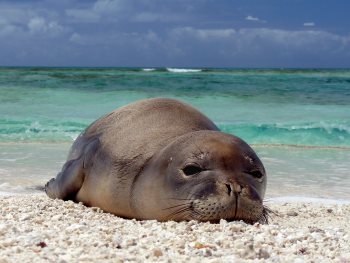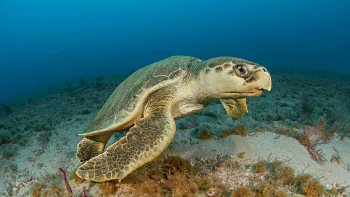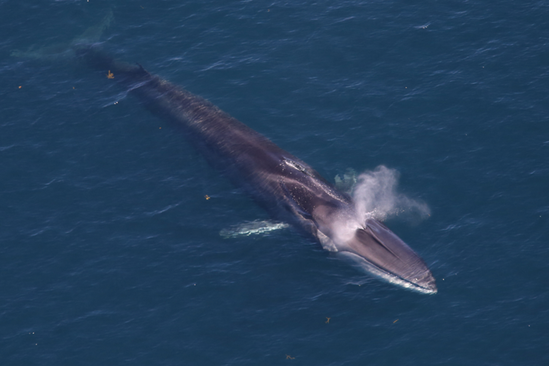10 ENDANGERED OCEAN SPECIES AND MARINE ANIMALS
Our eco-system works that animals and plants comprise a web, in which all species depend on each other. That is why we have intricate depictions of food chains and webs, showing us what would happen if one species was to become extinct. With one species out of the way, it is not long before others follow suit, and we as human beings will also be vulnerable to threats to our existence. And all this endangerment stems from destructive human activities such as indiscriminate fishing and pollution of the environment. Let us take a look at some of the most endangered marine species:
The Hawaiian Monk Seal
This earless seal lives in warm beaches, unlike other seal species which prefer cold regions. Studies show that about 1,400 of these animals remain in islands, owing to threats from predator species, commercial hunting, and indiscriminate fishing methods.
The Vaquita
With 90% of the population gone, there is a dire need for measures to preserve what remains of this cetacean species. This animal is common in the shallow waters in Mexico, around the Baja Peninsula. Its discovery came about almost fifty years ago, and since then, its sightings have continued to reduce over the years. At first, it was due to gillnetting, but even after the decline of the same, the numbers continue to dwindle.
Hector’s Dolphin
These small dolphins are about fifty in the world, which is quite low for a species that used to be so prevalent in the past. Their decline owes to the use of fishing nets which entangle these small species, leading to their death.
Hammerhead Shark
These migratory sharks face threats from fishers who wish to cut off their fins. The process used is quite terrible, with the fishermen dragging the sharks onboard and cutting off their fins while the fish are alive. They later throw the carcass into the water, leaving the shark to bleed to death. The ban on finning has not been of much help as it has driven up the prices for these products, thus motivating more people to get into the trade.
Kemp’s Ridley Sea Turtle
This rare sea turtle has faced endangerment from the destruction of its habitat, the pollution of the ocean, and destructive fishing techniques. At present, there are measures in place to protect the remaining species through the hatching of eggs in controlled conditions.
The Hawksbill Turtle
These animals thrive in tropical regions, and they are prevalent in coral reefs. Studies show that in the last one hundred years, we have lost at least 80% of these animals, which is quite a steep decline in their numbers. And it’s not mostly due to pollution, but rather, the threat comes in the form of trafficking of their meat and shells. These animals boast of beautiful shells with appealing patterns that have made them the target for poachers who are out to make a quick buck.
The Blue Whale
These animals are at the top of the food chain, and the health of the marine ecosystem is dependent on their existence. Over time, there has been a decline in their numbers, owing to commercial hunting, even with a ban in place. Their numbers lie in the regions of 10,000-25,000, and without more stringent measures in place, they will continue to decrease.
The Fin Whale
These animals are the second largest mammals in the world, after the blue whale and they boast of lengths in the tens of meters. As is the case with other whales, they have faced threats from fishers who continue to hunt them down, reducing their numbers in the process. The Humpback whale has also faced extinction from hunters who wish to extract its flesh and fur, and the species numbers range in the regions of 2000-3000.
The Green Sea Turtle
These species are common in tropical and subtropical regions where they often migrate from feeding grounds to hatching beaches. Many communities enjoy eating these species, which has led to a decline in their numbers. Additionally, they face threats from indiscriminate fishing practices and the loss of sandy beaches.
Steller Sea Lion
This eared seal is common in the cold waters in the North Pacific regions. These animals have faced threats from killer whales as well as humans who seek to extract oils, hides, and meat from them for commercial purposes. Their numbers have undergone a 60% decline. However, there is hope that they will increase in population, owing to a positive change in their figures in recent years.
These are but a few of the endangered species in our marine environment. Some animals have long gone into extinction, owing to unfavourable human activities, and it is high time that we put measures to protect what remains in our seas. Without action to prevent more losses, we are looking at a future where we too, as humans, could face extinction.
Our Blog
Saving wild ocean places, for us and future generations
Marine Conservation History
Marine conservation is a relatively new concept, having come to be in the 70s. It began in an era known as the...Read More
Human Impacts on Marine Environments
Human beings have for long relied on the sea for many reasons including as a source of food, for recreati...Read More
Corals and Coral Reefs
Of all marine ecosystems across the globe, coral reefs are the most diverse, earning them the name the rain...Read More



 Lane G. Deleon
Lane G. Deleon